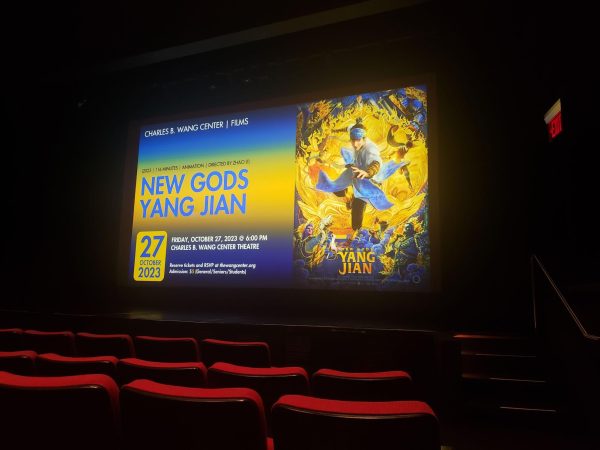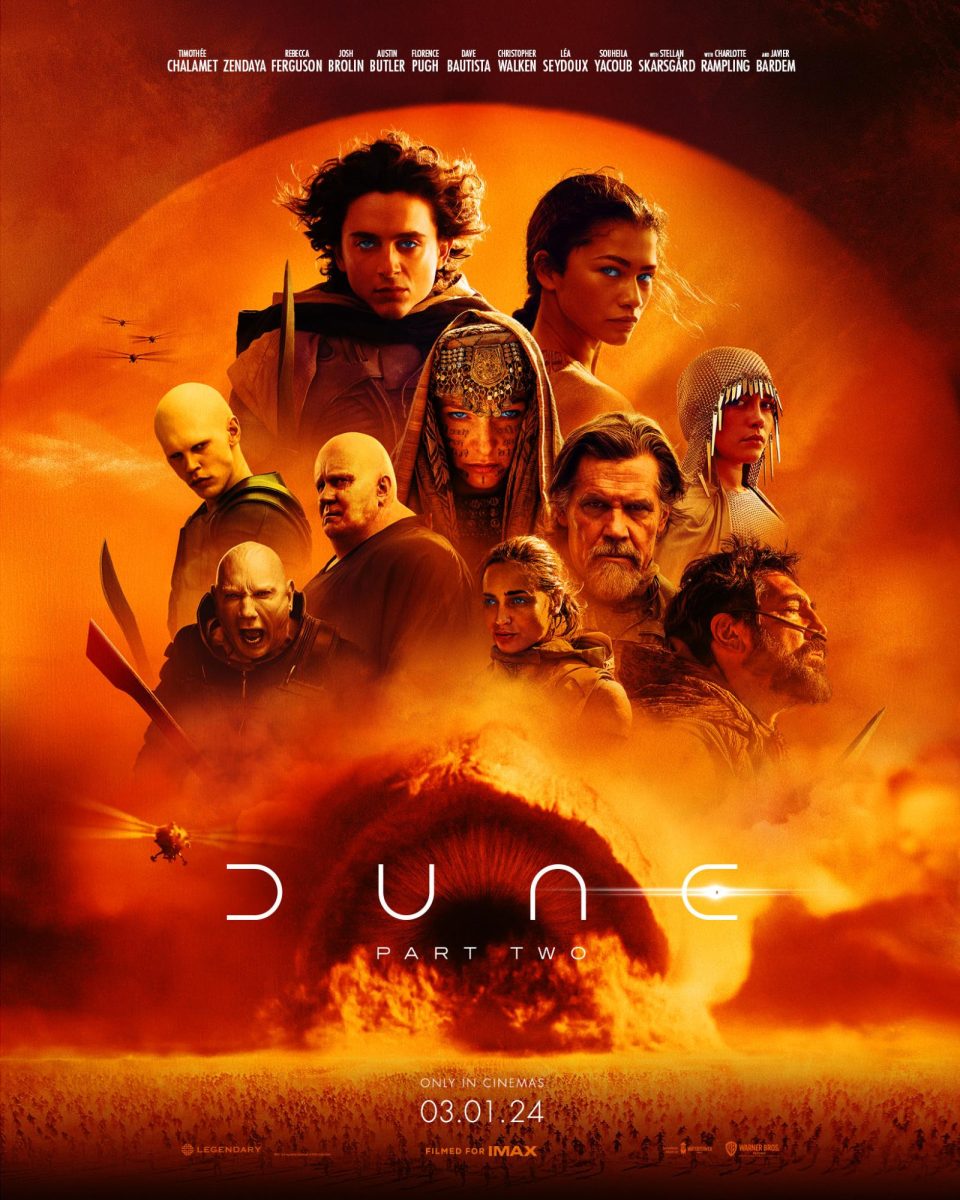
The Charles B. Wang Center featured the Chinese animated blockbuster “New Gods: Yang Jian” for its second film screening of the semester on Oct. 27. This film is the second in the franchise from Beijing-based Light Chaser Animation and is directed by Ji Zhao, who is most known for “White Snake” and “New Gods: Nezha Reborn.”
The titular character, Yang Jian, who also goes by the name Erlang Shen, is a semi-mythical character in Chinese folklore. He is featured in two Chinese texts, “Journey to the West” and “The Investiture of the Gods,” and is depicted with a third eye on his forehead. In this reiteration, he is a god bounty hunter who plays the harmonica. His former power as a god has diminished, with his third eye reduced to a scar on his forehead that he obscures with a headscarf.
Released in China on Aug. 19, 2022, the film hit No. 1 at mainland box offices, beating out “Minions: The Rise of Gru.” The distributor GKIDS, mainly known for the North American distribution of Studio Ghibli films, acquired the rights shortly after release. Film showings, with subtitles and a new English dub, began across North America in January 2023.
Although “New Gods: Yang Jian” is the second film in the franchise, watching the first, “New Gods: Nezha Reborn,” is thankfully not required. Both films are set in the same cinematic universe, but the plot and characters differ.
The beginning of the “Yang Jian” film lays out the history of a celestial war that wreaked havoc upon both the mortal and immortal realms before transitioning to a laid-back Yang Jian with his crew looking for work. Once they receive a job notice, their bounty hunter prowess is exhibited in the exhilarating chase and capture of a petty crook.
But the real meat of the film begins when a mysterious woman seeks out Yang Jian and his crew to retrieve a stolen lotus lamp. He embarks on a journey to hunt down the thief, who turns out to be his estranged nephew, reopening wounds of the past.
To appreciate the film in its entirety though, requires a familiarity with the Chinese mythos. Many characters’ appearances and names are from well-known Chinese figures like Shen Gongbao and Liu Chenxiang.
Its action scenes are reminiscent of older martial arts films paired with sleek animation. One of the film’s highlights is the sequence in which Yang Jian teaches his nephew the nine turns of kung fu. While functioning as a transition from one location to the other, the scene also displays character development and the complex emotions of rebuilding familial relations. Similar to the bamboo forest fight of “Crouching Tiger, Hidden Dragon,” close-ups of the characters’ faces reveal these feelings between shots of leaping among the trees and gliding across the water.
The film combines traditional natural Chinese aesthetics with futuristic elements, complete with mountain temples and floating holograms. This mixture of visual elements is also reflected in the soundtrack. Yang Jian is musically represented with the use of a lone harmonica which doubles as his weapon. Additionally, the score has elements of traditional Chinese music and surprising hints of playful jazz and blues. Many have interpreted these aesthetic and musical choices as a nod to another popular Japanese animation “Cowboy Bebop.”
However, the plot struggles as it attempts to pack far too much content into the two-hour film. The drawn-out beginning does not mesh as well with the pensive tone and larger themes of the second half. Familial relationships also quickly became confusing, although it is likely that the translation lost some cultural nuances.
Despite these setbacks, the film’s overarching themes of family, loss and redemption are relatable to broader global audiences who universally experience them. And for mythology fans, this serves as a welcome introduction to Chinese lore in an entertaining and unconventional way compared to traditional novels.
The Wang Center’s next screening features Maasaki Yuasa’s “Inu-Oh,” which is loosely inspired by the Japanese Tale of the Heike, on Nov. 17.
Eric Murphy, assistant director of Cultural Programs at the Wang Center, wrote an email to The Statesman about the films they choose to show. He said the goal is to encourage an appreciation for Asian and Asian American culture in the community. Out of the three films showing this fall, “New Gods: Yang Jian” is the only one from a Chinese studio.
“We have mostly screened Japanese films because of the large fanbase that they have, but wanted to make sure that other Asian cultures and languages are represented in this format,” Murphy wrote.
Despite Japanese animation’s popularity, going by the short post-credits scene hinting at the next “New Gods,” Light Chaser Animation plans to continue releasing more films for animation fans to dig into.


















